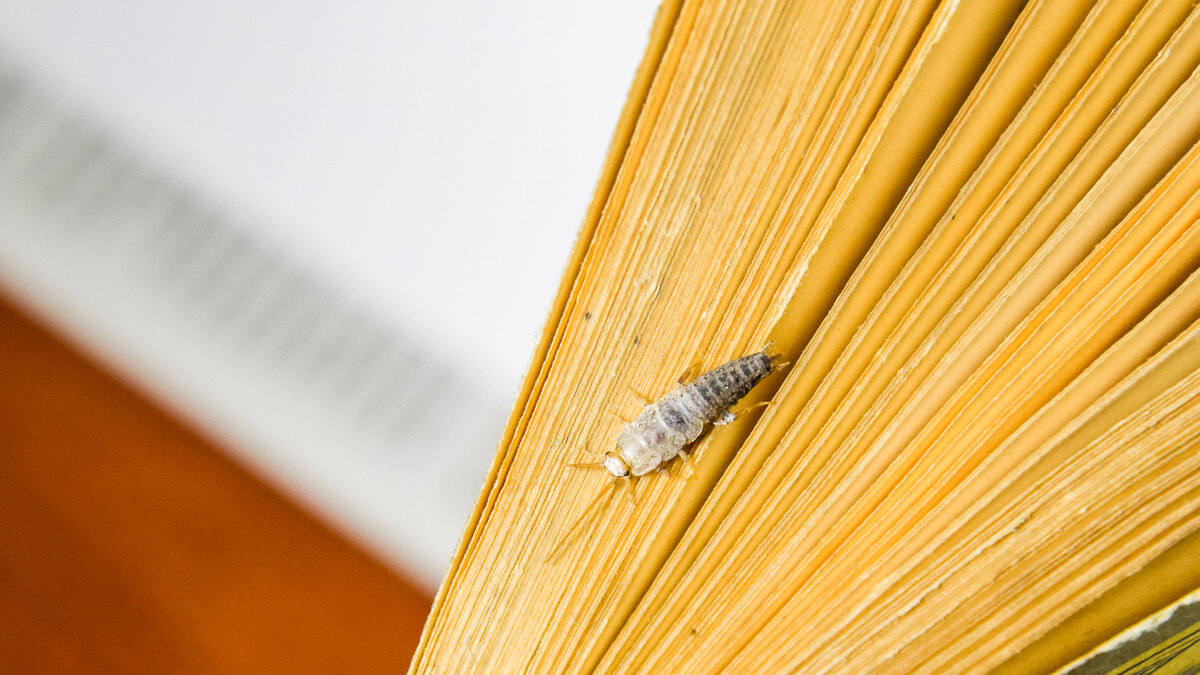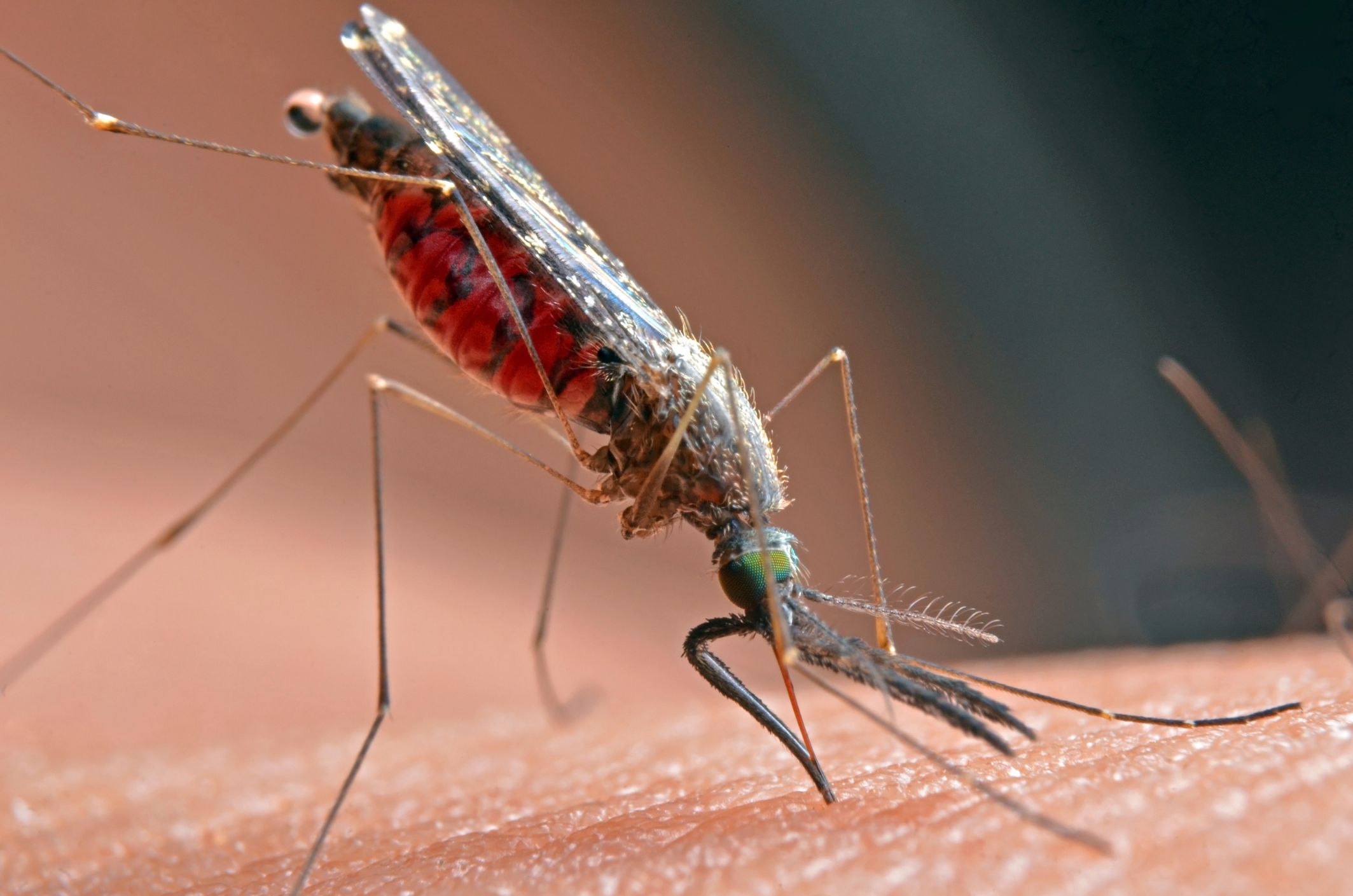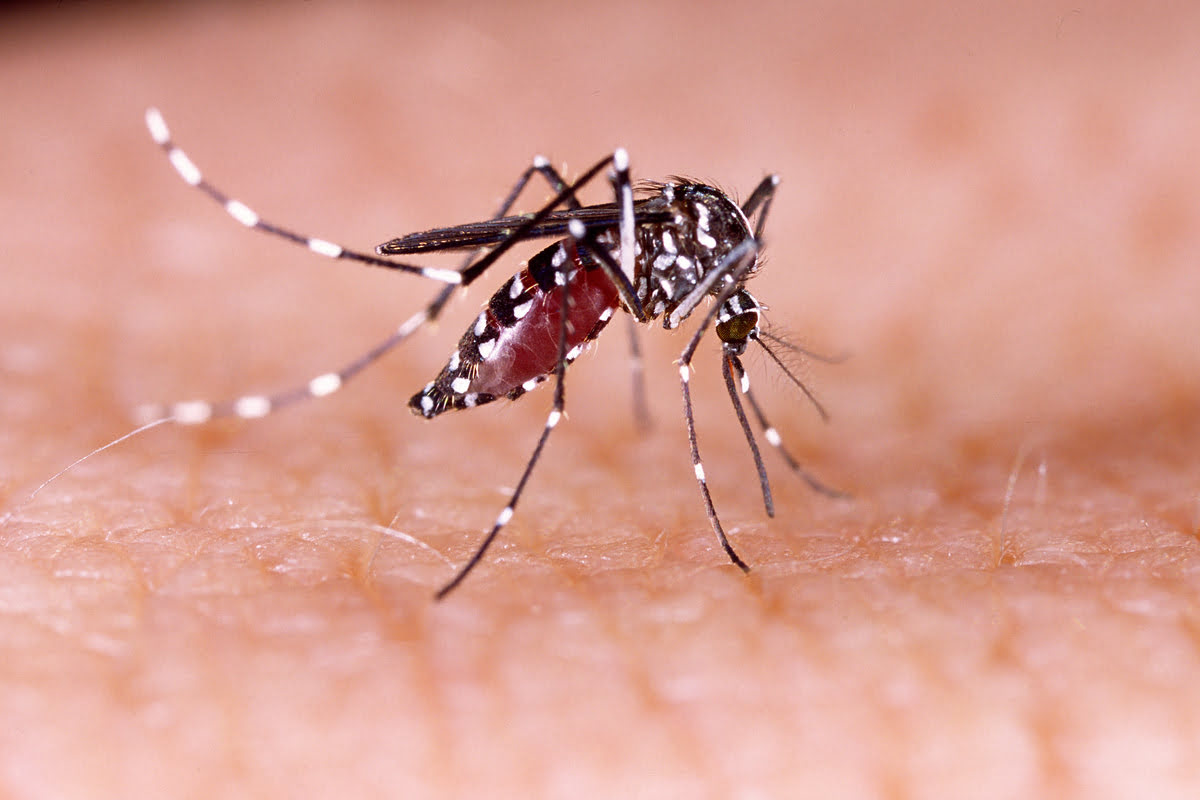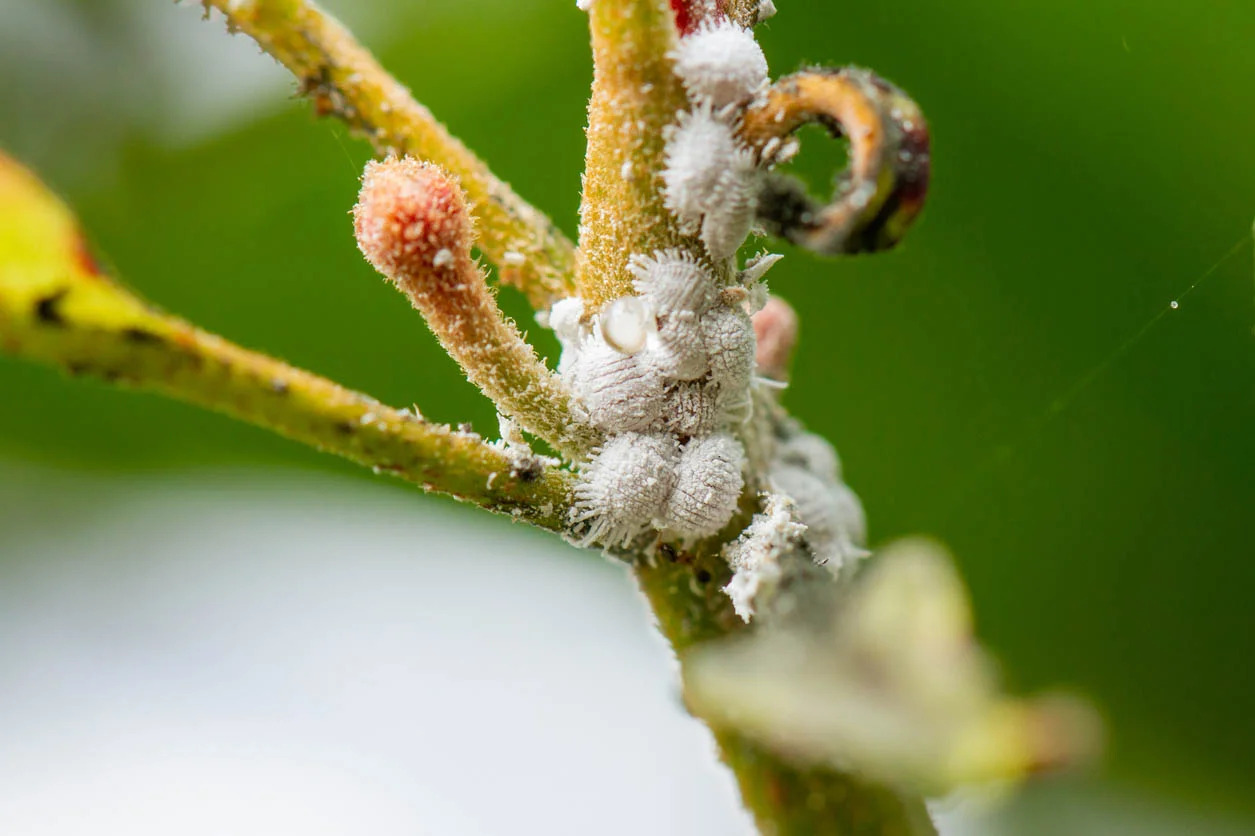Home>Gardening News and Trends>Latest News>How To Kill Silverfish Insects


Latest News
How To Kill Silverfish Insects
Modified: January 22, 2024
Learn the latest news on how to effectively kill silverfish insects and protect your home. Discover proven methods and expert tips to eliminate silverfish infestations.
(Many of the links in this article redirect to a specific reviewed product. Your purchase of these products through affiliate links helps to generate commission for Chicagolandgardening.com, at no extra cost. Learn more)
Table of Contents
Introduction
Silverfish insects are small, wingless creatures that are commonly found in homes and buildings. Despite their harmless appearance, they can cause damage to books, clothing, and other belongings due to their feeding habits. Silverfish prefer warm and damp environments, making them a common nuisance in bathrooms, kitchens, and basements.
Dealing with a silverfish infestation can be frustrating, but with the right knowledge and methods, you can effectively eliminate these pests from your home. This article will provide you with valuable insights into understanding silverfish insects, identifying signs of infestation, and implementing preventive measures to keep them at bay.
While many people may opt for chemical solutions to eradicate silverfish, we will also explore natural methods that are safe, eco-friendly, and can be easily implemented. Additionally, we will discuss how to maintain a silverfish-free environment to prevent future infestations.
By gaining a better understanding of these pesky creatures and learning how to combat them, you can regain control of your home and protect your belongings from silverfish damage.
Understanding Silverfish Insects
Silverfish insects, scientifically known as Lepisma saccharina, are small, wingless insects that belong to the order Zygentoma. They are characterized by their silver-gray color and their unique fish-like shape, which is where their name derives from. These insects are nocturnal by nature and prefer dark and damp environments.
Silverfish have a flat and elongated body, measuring around 1/2 to 3/4 of an inch in length. They are covered in tiny scales, giving them a silvery appearance. They have two long antennae at the front and three long bristles at the back, called cerci. These cerci resemble tails, which add to their distinctive fish-like appearance.
These pests are known for their destructive feeding habits. Silverfish are primarily scavengers, feeding on a wide range of materials including paper, glue, clothing, and food crumbs. They are particularly attracted to starchy substances such as book bindings, wallpaper paste, and clothing made of natural fibers.
Despite their name, silverfish insects do not pose any direct threat to human health. They do not bite or transmit diseases. However, their presence in large numbers can cause inconvenience and damage to household items. It is important to address a silverfish infestation promptly to prevent further problems.
In terms of reproduction, silverfish have a unique mating ritual. The male silverfish lays a spermatophore, a small packet containing sperm, which the female picks up with her genitalia. The female then lays her eggs in small batches, typically in cracks and crevices where they are well-hidden from predators and humans.
Now that we have a better understanding of silverfish insects, let’s move on to the next section where we will discuss the signs of a silverfish infestation.
Signs of Silverfish Infestation
Identifying the signs of a silverfish infestation is crucial for taking effective measures to eliminate these pests. While silverfish are nocturnal creatures that prefer to stay hidden during the day, there are several indicators that can alert you to their presence in your home.
One of the most common signs of a silverfish infestation is spotting these insects themselves. Due to their nocturnal habits, you may come across silverfish in the bathroom, kitchen, or other damp areas of the house when you turn on the lights at night. They are fast-moving insects and can quickly scurry away when disturbed.
In addition to physically seeing silverfish, you may notice some other signs that indicate an infestation. These include:
- Shed skins: Silverfish periodically shed their outer skins as they grow. These shed skins are often found near their hiding spots and can resemble small, translucent, and oblong-shaped flakes.
- Yellow stains: When silverfish feed, they leave behind yellow stains or feces. These stains are often found on surfaces where they have been active, such as in cabinets, bookshelves, or near food sources.
- Damage to books and paper: Silverfish have a particular affinity for paper and book bindings. If you notice chewed edges, small holes, or irregular gnaw marks on books, papers, or wallpaper, it may be a sign of silverfish feeding activity.
- Holes in clothing and fabric: Similar to their feeding habits on paper, silverfish may also cause damage to clothing and fabrics made from natural fibers, such as cotton or silk. Look out for small irregular holes or gnaw marks on clothing items stored in infested areas.
- Musty odor: In areas with a significant silverfish population, you may detect a musty or stale odor. This odor is produced by the pheromones released by the silverfish and can be an indicator of a severe infestation.
If you observe any of these signs in your home, it is crucial to take prompt action to prevent further damage and control the silverfish population. In the next section, we will discuss prevention measures to keep silverfish at bay.
Prevention Measures
Preventing a silverfish infestation is key to keeping these pests away from your home. By implementing a few simple measures, you can create an environment that is less attractive to silverfish and reduce the risk of an infestation. Here are some effective prevention tips:
- Maintain a clean and dry environment: Silverfish thrive in dark and damp areas, so it’s important to keep your home clean and free from excess moisture. Regularly vacuum and dust your home, paying attention to areas like basements, bathrooms, and kitchens where silverfish are commonly found. Fix any leaks or plumbing issues promptly to reduce moisture levels.
- Seal entry points: Silverfish can enter your home through tiny cracks and openings. Inspect the exterior of your house and seal any gaps or openings using caulk or weatherstripping. Pay attention to areas around windows, doors, vents, pipes, and utility entry points.
- Declutter and organize: Silverfish are attracted to clutter and find hiding places in stacks of paper, old newspapers, and cardboard boxes. Keep your living spaces tidy and organized, and store items in plastic containers with tight-fitting lids.
- Use dehumidifiers and proper ventilation: To reduce humidity levels in your home, use dehumidifiers in areas prone to moisture, such as basements and bathrooms. Additionally, ensure proper ventilation by opening windows, using exhaust fans, and allowing air circulation.
- Secure food sources: Silverfish are attracted to food crumbs and starchy substances. Store food in airtight containers and clean up spills and crumbs promptly. Pay special attention to your pantry, kitchen cabinets, and dining areas.
- Inspect used items: Before bringing in used items such as furniture, books, or clothing, carefully inspect them for any signs of silverfish, shed skins, or damage. This can help prevent introducing silverfish into your home unknowingly.
By implementing these preventive measures, you can significantly reduce the risk of a silverfish infestation in your home. However, if you already have a silverfish problem, it’s important to take action to eliminate them. In the next sections, we will explore natural and chemical methods to kill silverfish and maintain a silverfish-free environment.
Natural Methods to Kill Silverfish Insects
If you prefer to avoid using chemical solutions to eliminate silverfish, there are several natural and eco-friendly methods you can try. These methods are safe for humans and pets while effectively targeting silverfish. Here are some natural ways to kill silverfish:
- Diatomaceous Earth: Diatomaceous Earth is a natural powder made from fossilized remains of diatoms. It is non-toxic to humans but can be deadly to insects. Sprinkle diatomaceous earth in areas where silverfish are commonly found, such as around baseboards, in closets, and near bookshelves. The powder will dehydrate the silverfish, leading to their demise.
- Cedar Oil: Cedar oil is a natural insect repellent that can help deter silverfish. Mix a few drops of cedar oil with water and spray it in areas where silverfish are present. You can also place cedar blocks or sachets in closets and drawers to keep these insects away.
- Boric Acid: Boric acid is a low-toxicity powder that can be effective against silverfish. Sprinkle a thin layer of boric acid in areas where silverfish hide, ensuring it’s out of reach of children and pets. The silverfish will come into contact with the boric acid and eventually die from dehydration.
- Essential Oils: Certain essential oils have insect-repellent properties that can help repel silverfish. Peppermint oil, lavender oil, and citrus oils are known to be effective. Mix a few drops of the chosen oil with water and spray it around areas where silverfish are present.
- Traps: Silverfish traps are another natural method to catch and kill these pests. You can purchase pre-made traps or make your own by placing a glass jar with a starchy bait, such as bread or oatmeal, at the bottom. Coat the inside of the jar with petroleum jelly to make it difficult for the silverfish to climb out. The silverfish will be attracted to the bait and get trapped in the jar.
Remember, natural methods may require multiple applications and consistent monitoring to effectively control the silverfish population. If you have a severe infestation or if natural methods are ineffective, it may be necessary to consider chemical solutions. In the next section, we will explore some effective chemical solutions for eliminating silverfish.
Chemical Solutions to Eliminate Silverfish
If natural methods do not provide sufficient control over a silverfish infestation, you may need to resort to chemical solutions. There are various commercial insecticides available that are specifically formulated to target silverfish. When using these chemical solutions, it is important to follow the instructions carefully and take necessary safety precautions. Here are some chemical options to consider:
- Insecticidal sprays: Insecticidal sprays that contain active ingredients such as pyrethrins or pyrethroids can be effective in killing silverfish. Spray the insecticide in areas where silverfish are present, focusing on cracks, crevices, and baseboards. Be sure to ventilate the area and keep children and pets away during and after application.
- Insecticidal dusts: Insecticidal dusts can be applied in hard-to-reach areas or voids where silverfish hide. These dusts contain chemicals such as diatomaceous earth or boric acid, which are effective in killing silverfish. Use an appropriate applicator to distribute the dust and avoid inhaling it.
- Baits: Silverfish baits with slow-acting insecticides can be an effective method to control the silverfish population. The silverfish will be attracted to the bait, consume it, and bring the insecticide back to their hiding spots, infecting other silverfish as well. Place the baits in areas where silverfish are active, such as in dark corners, near bookshelves, or in cabinets.
- Professional extermination: If the infestation persists or if you have a severe silverfish problem, it may be necessary to enlist the help of professional exterminators. They have the knowledge, experience, and appropriate chemicals to effectively eliminate silverfish from your home.
When using chemical solutions, always read and follow the instructions on the product labels carefully. Take precautions to protect yourself, your family, and your pets from exposure to chemicals. If you have any concerns or questions, consult a professional pest control expert for guidance.
While chemical solutions can be effective, it is important to note that they may pose risks to the environment and can be harmful if not used responsibly. Consider using natural methods or preventive measures as the primary approach, and reserve chemical solutions for more severe infestations or as a last resort.
Now that you have learned about natural and chemical methods to eliminate silverfish, let’s move on to the next section where we will discuss how to maintain a silverfish-free environment.
Maintaining a Silverfish-Free Environment
Once you have successfully eliminated a silverfish infestation, it is important to take steps to maintain a silverfish-free environment. By implementing certain practices and making small changes in your daily routine, you can significantly reduce the likelihood of another infestation. Here are some tips for maintaining a silverfish-free environment:
- Regular cleaning: Keeping your home clean and free from debris is essential in preventing silverfish from returning. Vacuum regularly and dust hard-to-reach areas and corners where silverfish may hide. Pay special attention to areas that tend to accumulate dust and debris, such as behind furniture and in storage spaces.
- Declutter and organize: Clutter provides hiding places for silverfish, so decluttering and organizing your living spaces can help discourage them from taking up residence. Regularly go through your belongings to get rid of unnecessary items and keep storage areas tidy.
- Proper food storage: Silverfish are attracted to food sources, including crumbs and spills. Store food in airtight containers and promptly clean up any food residues or spills. This will help remove potential food sources that may attract silverfish back into your home.
- Repair moisture issues: Silverfish thrive in damp environments, so it is important to fix any moisture issues in your home. Repair leaking pipes, address water seepage problems, and ensure proper ventilation in bathrooms and basements. Keeping moisture levels low will make your home less appealing to silverfish.
- Inspect and seal entry points: Regularly inspect the exterior of your home for any cracks, gaps, or openings that silverfish can use to enter. Seal any openings with the appropriate materials, such as caulk or weatherstripping, to prevent silverfish from gaining access.
- Monitor and take early action: Keep an eye out for any signs of silverfish activity, such as shed skins or damage to books or clothing. By catching the early signs of a potential infestation, you can take prompt action and prevent it from escalating.
By incorporating these practices into your routine, you can create an environment that is less favorable for silverfish to thrive. Remember, consistency is key in maintaining a silverfish-free home. Regular cleaning, organization, and preventive measures will help keep them at bay.
If you continue to experience persistent silverfish issues despite your best efforts, it may be helpful to consult with a pest control professional who can provide tailored recommendations and solutions to address the problem effectively.
With these preventive measures and vigilance, you can enjoy a silverfish-free environment and protect your belongings from their destructive feeding habits.
Conclusion
Dealing with a silverfish infestation can be frustrating, but with the right knowledge and methods, you can effectively eliminate these pests and prevent future infestations. Understanding the behavior and habits of silverfish is the first step in tackling the problem. By identifying signs of infestation, such as shed skins and damage to books or clothing, you can take prompt action to address the issue.
Implementing preventive measures is crucial in keeping silverfish away from your home. Maintaining a clean and dry environment, sealing entry points, and decluttering can go a long way in deterring these pests. Additionally, using natural methods such as diatomaceous earth, cedar oil, or boric acid can help eliminate silverfish without the use of harmful chemicals.
If natural methods are not effective or if you have a severe infestation, chemical solutions may be necessary. Insecticidal sprays, dusts, and baits can provide a more aggressive approach to controlling silverfish populations. However, always follow the instructions carefully and ensure your safety and the safety of others when using chemical solutions.
Once you have successfully eliminated silverfish from your home, it is important to maintain a silverfish-free environment. Regular cleaning, organization, and moisture control will help prevent future infestations. By taking early action and monitoring for signs of silverfish activity, you can address any potential issues before they become severe.
Remember, if you are facing persistent silverfish issues or if you are unsure about the best course of action, it is advisable to seek professional help from pest control experts who can provide customized solutions to eliminate silverfish from your home.
By implementing these strategies and maintaining a proactive approach, you can regain control of your home and protect your belongings from the damage caused by silverfish. With proper prevention and timely action, you can enjoy a silverfish-free environment in the long term.









